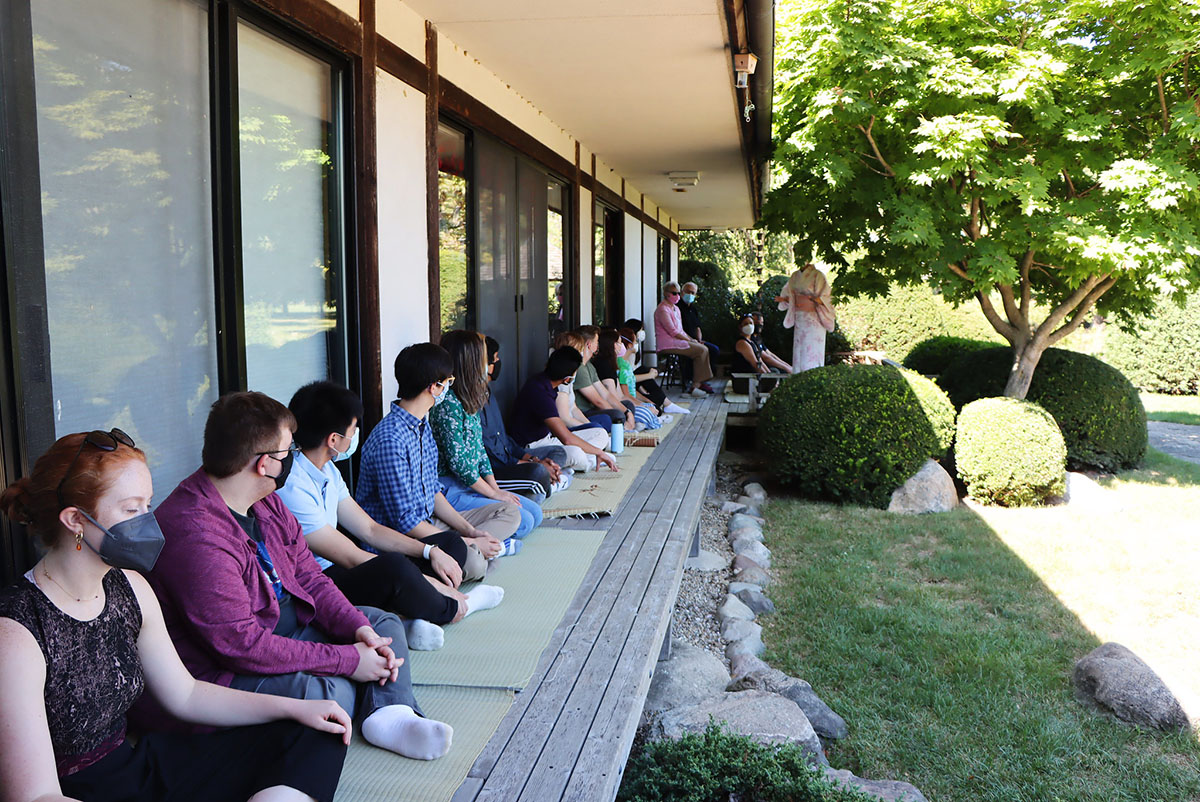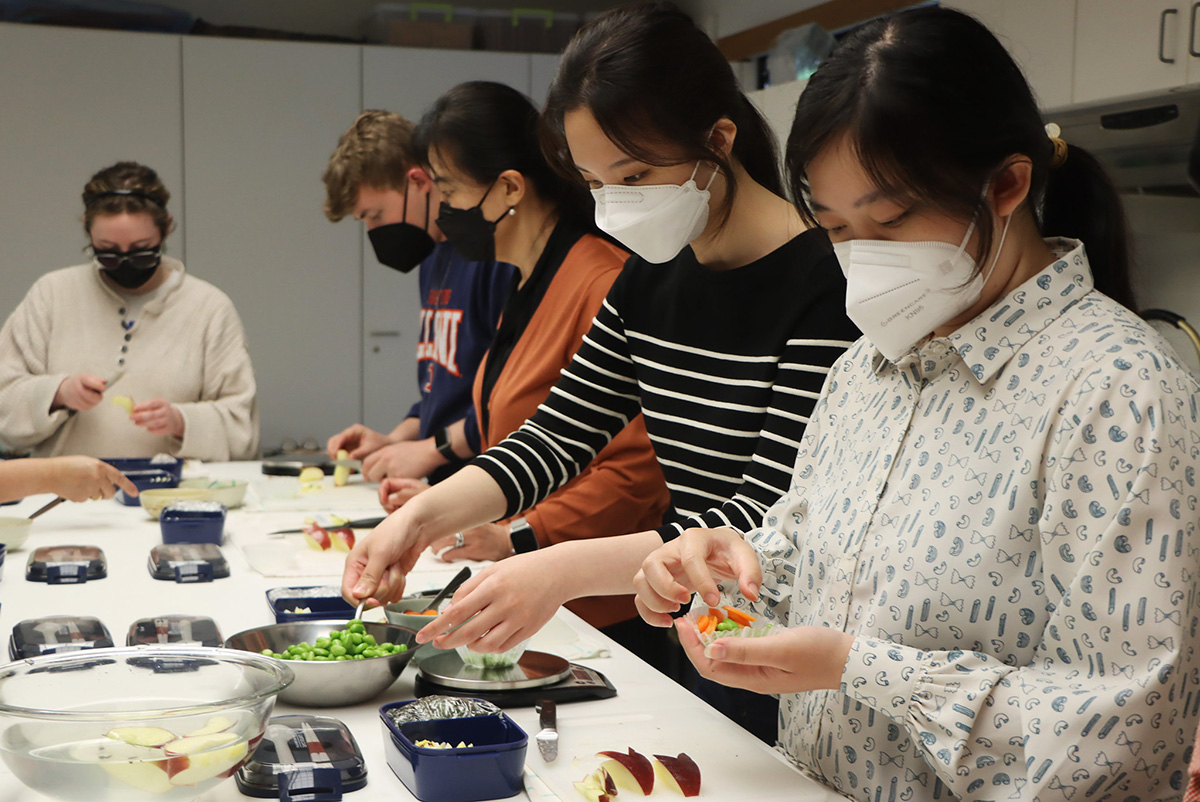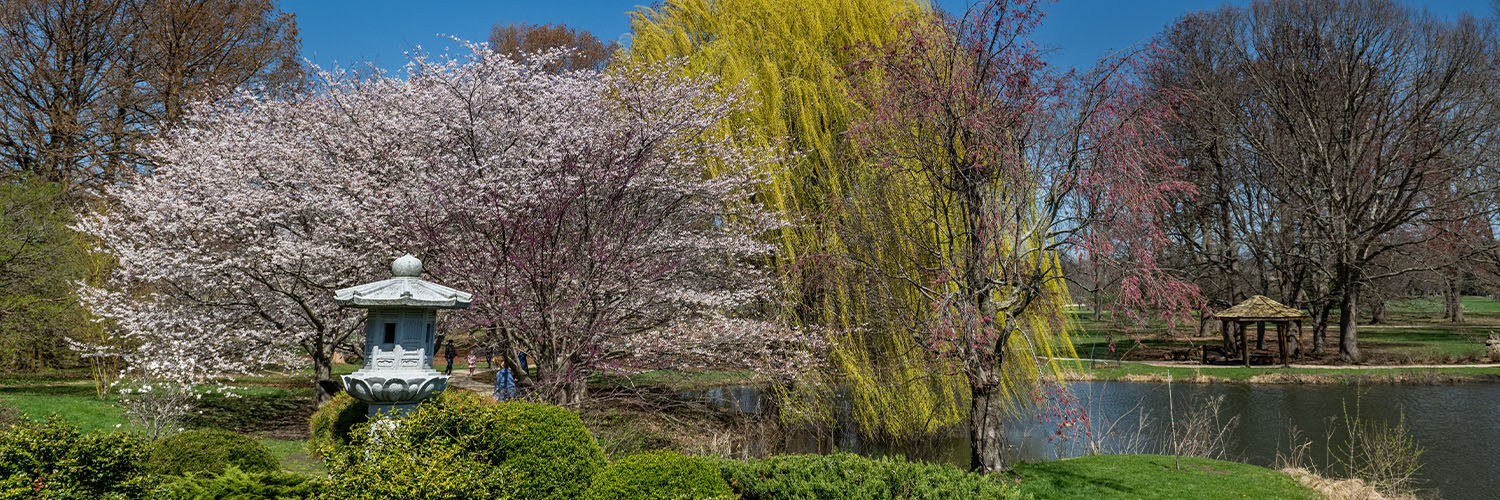Japan House has been a cornerstone of UIUC’s campus since it was founded in the 1960s. After taking over in 2011, Director Jennifer Gunji-Ballsrud, alongside Education and Engagement Specialist Diana Liao and Assistant Director of Academic Programming Lindsey Stirek, made it her priority to expand Japan House’s academic stake at the university beyond the classes they offered. These dedicated leaders of Japan House made their dreams a reality when they launched the new Japanese arts and aesthetics (ARTJ) minor, which opened for student enrollment in fall of 2022.
To learn more, we talked with the Japan House team and current student Sydney Nielsen, one of the first students to enroll in the ARTJ minor, about Japan House and how the new minor can strengthen its impact on campus.

What is Japan House’s mission?
Professor Gunji-Ballsrud: The mission that’s been established since the time that we started is to share the traditional Japanese arts and culture in an experiential way … The foundation of why we exist is that we share the Japanese Way of Tea. It is an aesthetic practice and discipline that is an umbrella to so many facets of traditional Japanese arts. I mean, I can rattle off sweet-making, Japanese cuisine, kimono, ceramic, metal ware, etiquette, philosophy, morality, we can just go on and on. That’s why we find the Japanese Way of Tea as being kind of a cornerstone, if you will, to our mission.
And so our mission is really about sharing traditional Japanese arts under that umbrella, but also about sharing the four principles of Tea, which are harmony, respect, purity, and tranquility. That’s really why we’re on this campus.
Why should students enroll in the Japanese Arts and Aesthetics minor?
Professor Stirek: It can be kind of what you make it and what classes you decide to incorporate into it. But the important part about this minor is that it’s largely based on experience and deep thinking, rather than creating something just for a grade all the time.
Students who are looking for a deeper understanding of not only Japan but also of how cultures interact with each other and how past culture influences current culture find a place in our minor. Students who are looking to expand their career opportunities by interacting with Japan in this way, gaining cultural competence, will find it here as well.

What are examples of classes students can take?
Professor Stirek: [We have] the internship, which is ARTJ 399. This semester, we have four students. That class is our much sought-after internship that Jennifer developed awhile ago.
In addition to that, we have two sections of our tea ceremony class, ARTJ 209. … Every week Jennifer does a tea ceremony and they learn how to be guests. And in their readings and discussions they learn about the philosophy of tea and the kind of broader artistic and cultural context of tea.
We also have 299, which is my Exploring Anime through the works of Studio Ghibli class. So for homework, they watch Ghibli movies and then do Ghibli-related readings. … We talk about Ghibli movies and storytelling and music design, character design, art, colors—all of these things that really factor into that—and of course animation itself.
ARTJ 301, my Introduction to Manga class, is all about manga, which is Japanese comics. Students do have to do at least a little bit of drawing. There are many projects that they do. And then they work in a group to create a manga together for their final project. There are also some responses that they have to do to kind of digest the larger history of manga.
Ikebana, 199, flower arrangement, where they actually are creating flower arrangements every single week. It’s an eight week course. … That all culminates in an exhibition of their flower arrangements. And that one’s really fun.
I think I’ve covered all the ones that are this semester. … In the spring, we have even more classes.

From a student’s perspective, what is the best part about being involved with Japan House?
Sydney: My favorite part is just the people involved with Japan House. [They] are some of my favorite people I’ve ever met. They’re some of the sweetest people. Whenever I need anything, I can reach out and I know they’ll be willing to help out, whether it’s the rest of the staff, the other interns, [or] past interns. There are so many people that are involved, making it such a unique place on campus.

Which classes have you taken with Japan House?
Sydney: I took ARTJ 199, flower arranging class, last fall. [It was] super fun. You can be in any major or minor to take any of the Japan House classes, which I think is very appealing to the student population. They are really small classes, because there’s usually only one, maximum two sections offered of certain classes. And then I am currently in their internship program, [which] counts as a class, ARTJ 399. Of course, their main class will be ARTJ 209, which is the Way of Tea.
Why did you decide to minor in Japanese Arts and Aesthetics?
Sydney: Japan House has always been like a second home to me. When I go there, it doesn’t really feel like a class to me. I feel like I’m participating in something that I love, rather than it being like, obligatory. And so I was already spending a bunch of time there anyway, between classes, volunteering, and now all my variety of jobs that I have there. I’m actually really close to even finishing the minor, because I’m also taking Japanese language here on campus, and every semester is five credit hours. So that’ll kind of go toward it, too. It was really a no brainer because I’ve loved all the classes I’ve taken there.
And like I said, I’ve met some of my favorite people there, and the content I learned there will be useful for what I want to go into in the future, because I’m looking at international business, specifically in Japan. So any kind of cultural information I can really gain out of education is really critical to me. There are not many other schools that will have a program like this. This minor is actually the first one in the country.
How has participating in the Japanese Arts and Aesthetics minor helped you grow in your other areas of study?
Sydney: Since I do want to work in international business in Japan in the future, just that extra knowledge, like the culture itself, is going to be super, super helpful. Knowing that the information I’m getting is from primary sources and has been curated for students who are interested in these exact topics has been helpful for me. When I go to Japan, everything that I learned can be directly applied. When I go I can be like, “Oh, I’ve served in tea ceremonies before.” There are not a lot of people that are going to be able to do that.
I’ve always said my dream company is a position at Nintendo, and they always have positions for people to go back and forth between America and Japan. I can take classes in those exact fields to apply toward my future career.
On the leadership side, what are some of Japan House’s goals for the future?
Professor Gunji-Ballsrud: I’ve been in this position 11 years, and so my goals have always been to increase our academic offerings, which, thanks to both Lindsey and Diana, I have been able to do in the manner in which it’s now structured and recognized by the university.
We’re also building an annex. … [The] pandemic slowed us down, but we’re going to break ground next year. So we’re adding another 6,000 square feet to the Japan House, which will dynamically change what we can offer in terms of how we can offer it. If you’ve ever been in our space, we have one main room. And that main room is our classroom, that main room is the seating area for tea ceremony, that main room is a meeting room. And in this annex, we will have a designated classroom, so we do not have to constantly be changing out our main room in our current space. We will also have a fully accessible tea room, which has been a dream of mine.

What would you say to students who want to get involved with Japan House or the Japanese Arts and Aesthetics minor but are worried they may not fit in?
Professor Gunji-Ballsrud: One of the wonderful things is that we don’t attract a specific type of student. It is so broad in terms of the disciplines; it’s pretty amazing. If you were to look at my class rosters, [we have students from] aerospace engineering, computer science, music, education, business, actuarial sciences—I mean, it’s all over the board. And so that’s really quite wonderful to me, that people are just coming from all different disciplines and wanting to learn about Japanese arts and culture.












Add comment